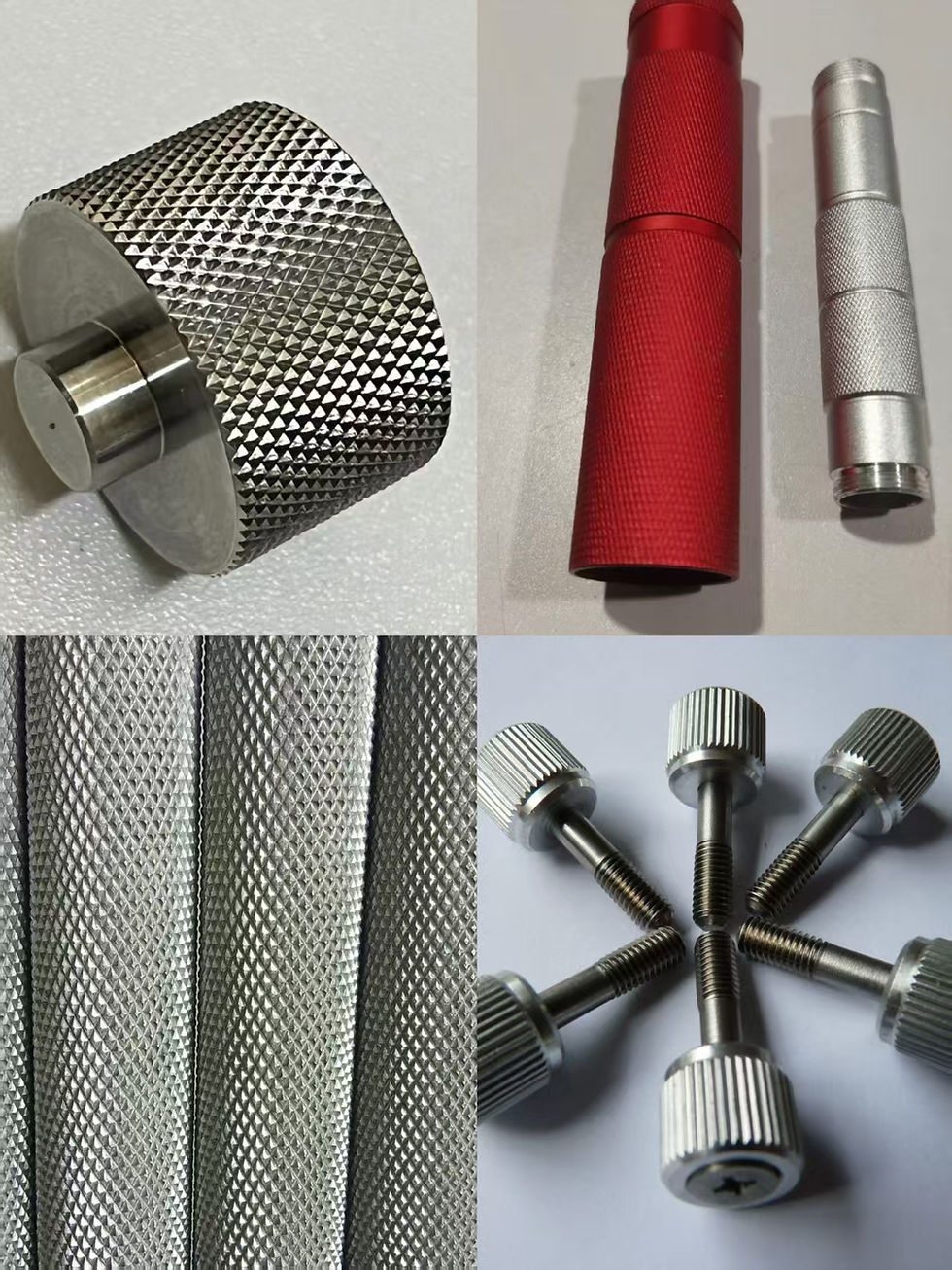Prototype surface finishing of knurling
- Julie Hoo
- Jul 19
- 2 min read
Updated: Jul 21
In prototyping industrial, the [surface finishing]directly determines the visual effect, touch experience and reliability of functional testing of the [prototype] . Knurling, as a classic cold working technique, is becoming a key process to enhance the practical value and commercial competitiveness of prototype due to its unique anti-slip and decorative properties.

What is Knurling?
Knurling is applying significant pressure to the surface of a [metal] workpiece using a hardened roller with specific patterns (referred to as a knurling roller), thereby creating a concave and convex pattern resembling "stamping."

How to realize prototype knurling
1. The process is integrated in the [CNC turning] center to complete the knurling synchronously, and the knurling wheel is loaded with the turret to avoid errors caused by secondary clamping.

2. Select knurled type for [texture] design.
1).Straight KnurlingStraight lines and groove patterns are formed on the surface of the [metal parts] , typically achieved through the cross-action of two hardened rollers with helical teeth. This creates parallel or oblique straight lines, enhancing grip and handling performance.
2).Spiral KnurlingAlso known as net-pattern knurling, this method forms spiral diagonal lines on the surface of an object, similar to the thread of a screw. It is commonly applied to cylindrical surfaces to enhance functionality and appearance.
3).Rhombic KnurlingSmall rhombic raised or concave patterns are formed on the [surface] of the workpiece by utilizing a roller with rhombically arranged tooth patterns. The crossed diagonal lines improve both tactile and visual aesthetics.

3. Post-processing
Deburring:The raised edges after knurling are prone to burrs, and they need to be treated with vibrating or [sandblasting] to ensure smooth touch.
Surface cleaning: Avoid the residual cutting fluid affecting the texture clarity, especially for soft materials such as [Aluminum] and [Brass].
Why knurling on prototype?
1. Outstanding Anti-Slip Performance
The raised patterns significantly increase the friction between fingers or tools and the surface of the [prototype] . Applications such as wrenches, knobs, foot pedals, and door handles all benefit from knurling to provide reliable control.
2.Enhanced Product TextureNeat and regular embossed patterns, such as diamond-shaped grids or parallel straight lines, can impart unique visual beauty and a premium tactile experience to products. Whether for tools, instrument panels, or furniture hardware, knurling adds a refined touch.
3.Micro-Size Compensation
The rolling process induces localized deformation of the [metal] material, potentially resulting in a slight increase in the diameter of the workpiece. This characteristic can serve as an auxiliary means for fine-tuning dimensions or compensating for tolerances in precision assembly scenarios.

With the core value of "functional embedded aesthetics", the knurling process has become a key bridge for the [prototype] to move from "visual prototype" to "functional prototype", providing a more efficient verification path for product development.
Click [here] for a free quote and start to your project,your design ideas or new project will turn into reality.















Comments